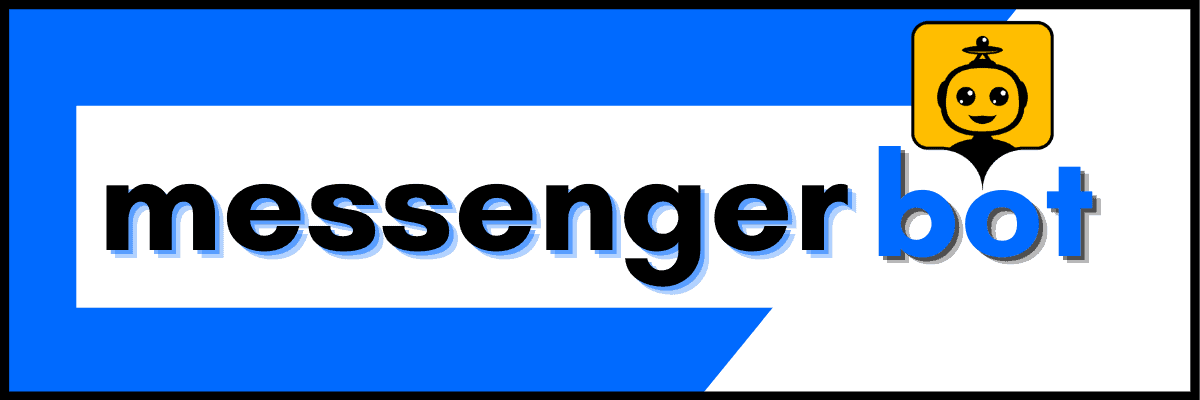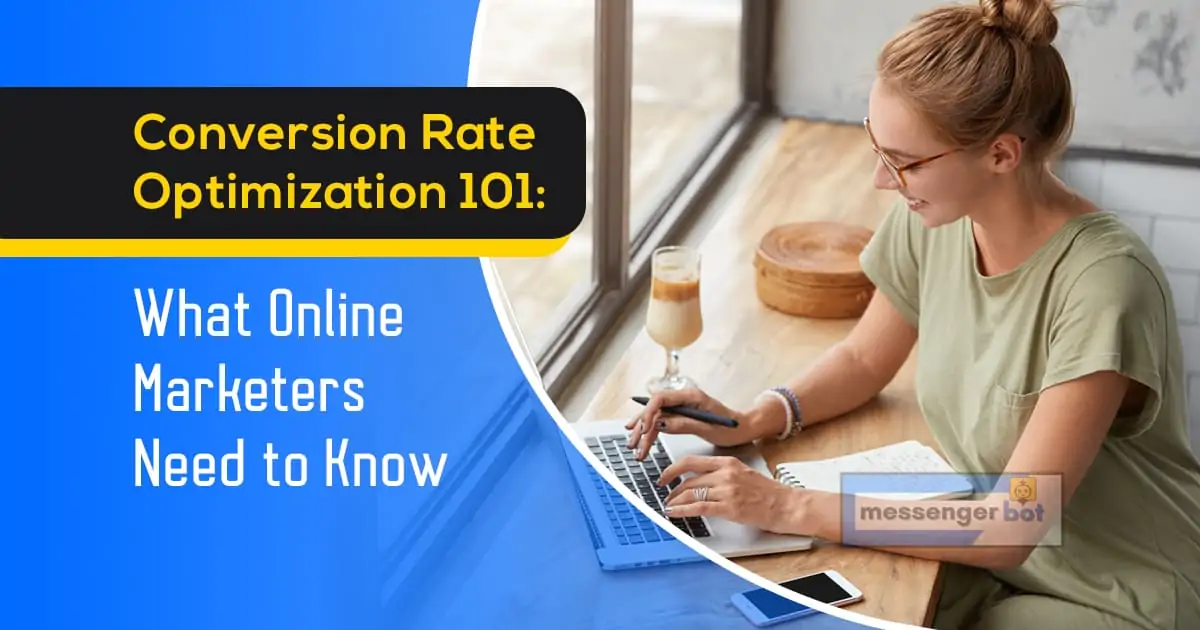- Conversion Rate Optimization 101: What Online Marketers Need to Know
- How Do You Improve Conversion Rate?
- 4 CRO Techniques to Try
- Improve your call to action (CTA) in your blogs
- Try changing the headlines of your landing pages.
- Test How Many Form Fields Your Website Form Should Have to Drive High Conversions
- Make your checkout process simple.
- Improve your Conversion Rate with Messenger Bot
If you are a business owner, your goal likely is to make as much money as possible. The question is: how do you get traffic to your website and increase the conversion rates? One of the most effective strategies for rising conversion rates is called CRO or Conversion Rate Optimization. In this post, we’ll be discussing what online marketers ought to know about CRO to boost their revenue.
Let’s get to know more about conversion rate optimization.
What is Conversion Rate Optimization (CRO)?
Conversion rate optimization (CRO) is the process of increasing website conversions and sales. A conversion is the desired action a web visitor takes on your site, such as making a purchase or filling out a lead form.
CRO usually involves an analysis of what’s happening now (what gets visitors to convert) and testing new versions (new designs, offers, calls-to-action); this is called split/multivariate testing). The goal is to increase revenue by improving engagement with users by tweaking small details that significantly impact key metrics like cost per acquisition or percent of people who sign up for newsletters after visiting the site just once.

What is a Conversion Rate?
Conversion rate is the percentage of visitors to a website who complete the desired action. Your goal with conversion rate optimization is increasing the share of these visitors signing up for your forms or buying your product.
So if you have 100,000 visits and your conversion rate is 25%, that means there are 25,000 conversions. Check out this handy calculator for converting percentages into numbers: 25% = 2500 conversions in total or 1250 per month/200 per day.
For many e-commerce websites such as online stores, blogs about products, music streaming services, etc., these sites want people to buy their product before leaving the area so they can generate revenue from those purchases; therefore, they need to optimize their conversion rates because no matter how much traffic comes by without buying anything they’re not going to get any profit off it.
How Do You Measure Conversion Rate?
You have to consider your conversion rates from different angles. It’s not enough to look at how many people convert on your site. You also have to consider the number of total visitors you get and calculate a standard percentage for every conversion type (i.e., purchases or signups).
You can measure conversion rate by dividing the number of conversions by the total number of visitors multiplied by 100.
Conversion rate optimization is about testing different techniques and changing a few page elements to see which gets the highest conversion rate.

Why is Conversion Rate Optimization Important?
Online conversion rates are an essential metric for businesses because they reflect how many website visitors decide to buy or use the product. If a company is not achieving its desired conversion rate, it may be time to conduct some CRO testing.
Keyword-targeted content and well-designed landing pages can make all the difference in this arena by guiding your customers through your sales funnel. One of the most common tactics online marketers employ when looking at optimizing conversions is A/B Testing – where two versions of one page are created as variations on each other (A vs. B).
Content such as headlines, images, text copy, and more can then be tested against one another to determine which version has had tremendous success with converting web traffic.
The desired conversion rate for a business depends on the type of company and product or service it offers. But generally speaking, if you are not achieving at least one out of every three website visitors converting to customers (also known as your “conversion rate”), chances are your Conversion Rate Optimization strategy needs to be revisited with some experimentation.
Conversion rate optimization (CRO) helps grow your business exponentially, so it’s essential to test out as many page elements as you can to see great results.
What Factors Affect Your Conversion Rate?
Several factors can affect your conversion rate. The number of website visitors converting to paying customers depends on user experience and other factors. Knowing the elements that can affect your conversion rate can help you maximize the benefits of conversion rate optimization. Here are some of them:
Landing Page Design and Copy
Landing pages are the page that users land on after clicking a link. It’s the first impression of your company and most likely determines whether they will convert or not, so you should keep it in mind when designing your website.
A landing page is typically where web admins test different headlines to see which ones generate more conversions than others. For example, if a user clicks through from Google for “boots,” then this may be what greets them:
The headline could say anything – but something like ‘Get 20% off Payless Boots’ would perform better because the visitor has already shown an interest in footwear by searching specifically for boots. In contrast, presenting the offer as just another product listing might confuse visitors looking for winter gear.
The landing page copy also matters when it comes to conversion optimization. Testing which landing page copy generates the most conversions should be part of your conversion rate optimization strategy.
Relevant Website Traffic
The quality of your website traffic affects your conversion rate, too. Optimize web page elements if your conversion goals aren’t met, but your desired traffic is met.
This is where conversion optimization comes in handy. Google Analytics can help you analyze conversion optimization by showing you which web pages drive the most traffic and have the highest conversion rate. By knowing this, you already know what web pages to optimize.
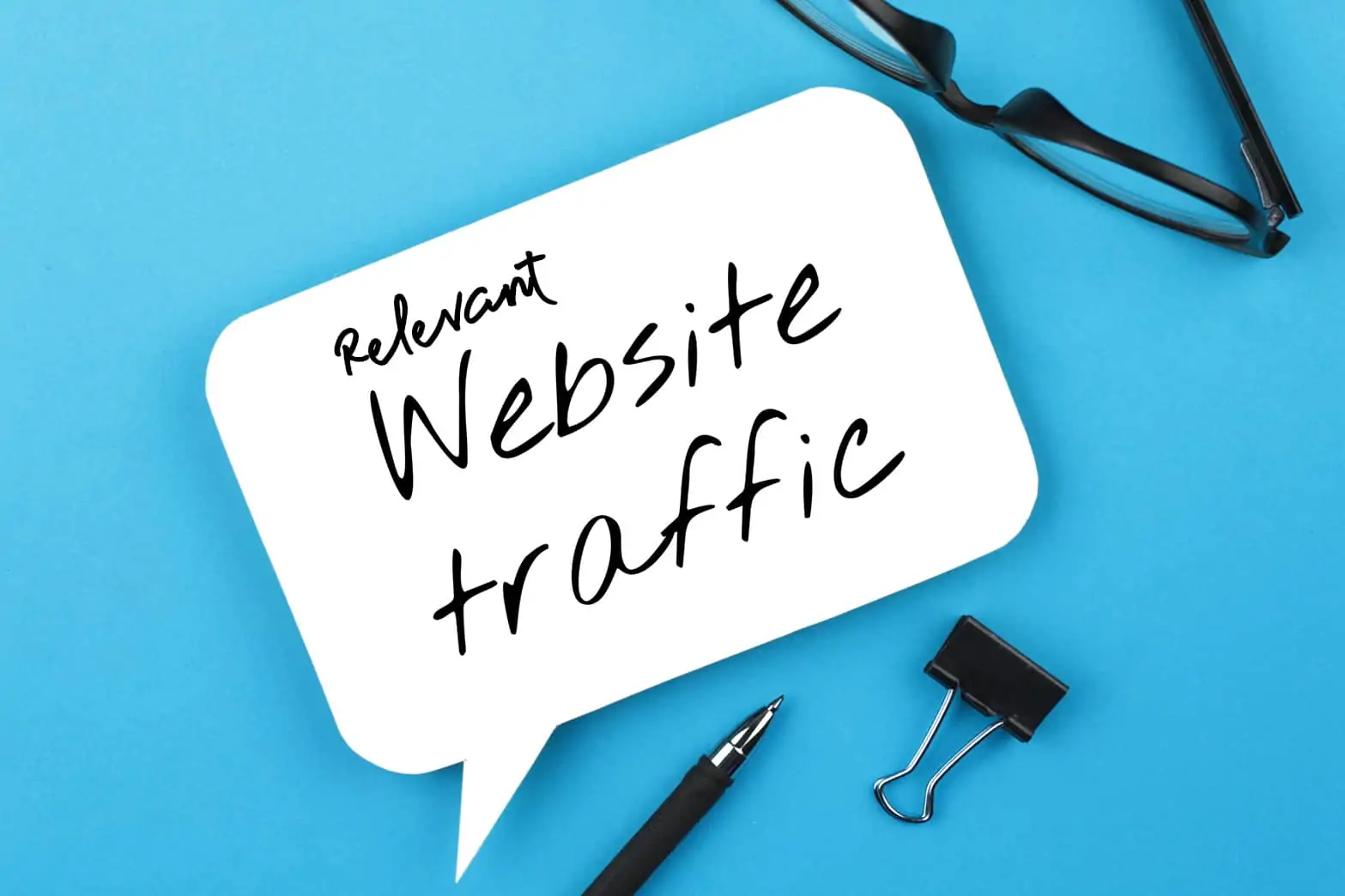
User Experience/User Interface Design
Improving your UX/UI design should be in your conversion optimization strategy. User experience (UX) is the sum of experiences users have when interacting with a company’s products or services.
User interface design (UI) refers to how typical tasks are offered and executed within an application, website, program, device, or system.
UX design can affect the conversion rate. A study by Conversion XL found that 85% of marketing professionals believe improving the user experience is vital to their business success. They also reported that UX design could positively affect conversion rates because it enhances customer satisfaction and retention.

How Does Conversion Rate Optimization Work?
Conversion rate optimization a subset of usability. If you consider ease and speed of completing goals as critical components in the user experience, optimizing for increased conversion rates becomes easier to understand.
It’s not enough to optimize for usability; the user experience is crucial and can’t be ignored when it comes to conversions because they ultimately matter in any business.
Creating an online presence these days has become more complex than ever before due to the increased competition out there – no matter which industry your company operates within or even if it’s just individuals running their sites on WordPress blog platforms.
The internet makes accessibility more accessible than ever but at the same time presents more significant challenges such as how do we create excellent content? How does one get traffic without spending money? What will trigger people into action so that they convert into sales.

How Do You Improve Conversion Rate?
Improving your conversion rate is possible as long as you have clear conversion goals in mind. The standard way to do this is A/B testing. In an A/B testing, which can be used when one variable has been changed at a time (e.g., headline text) between variations on a web page, visitors are split into groups that see either variation A or B—but not both.
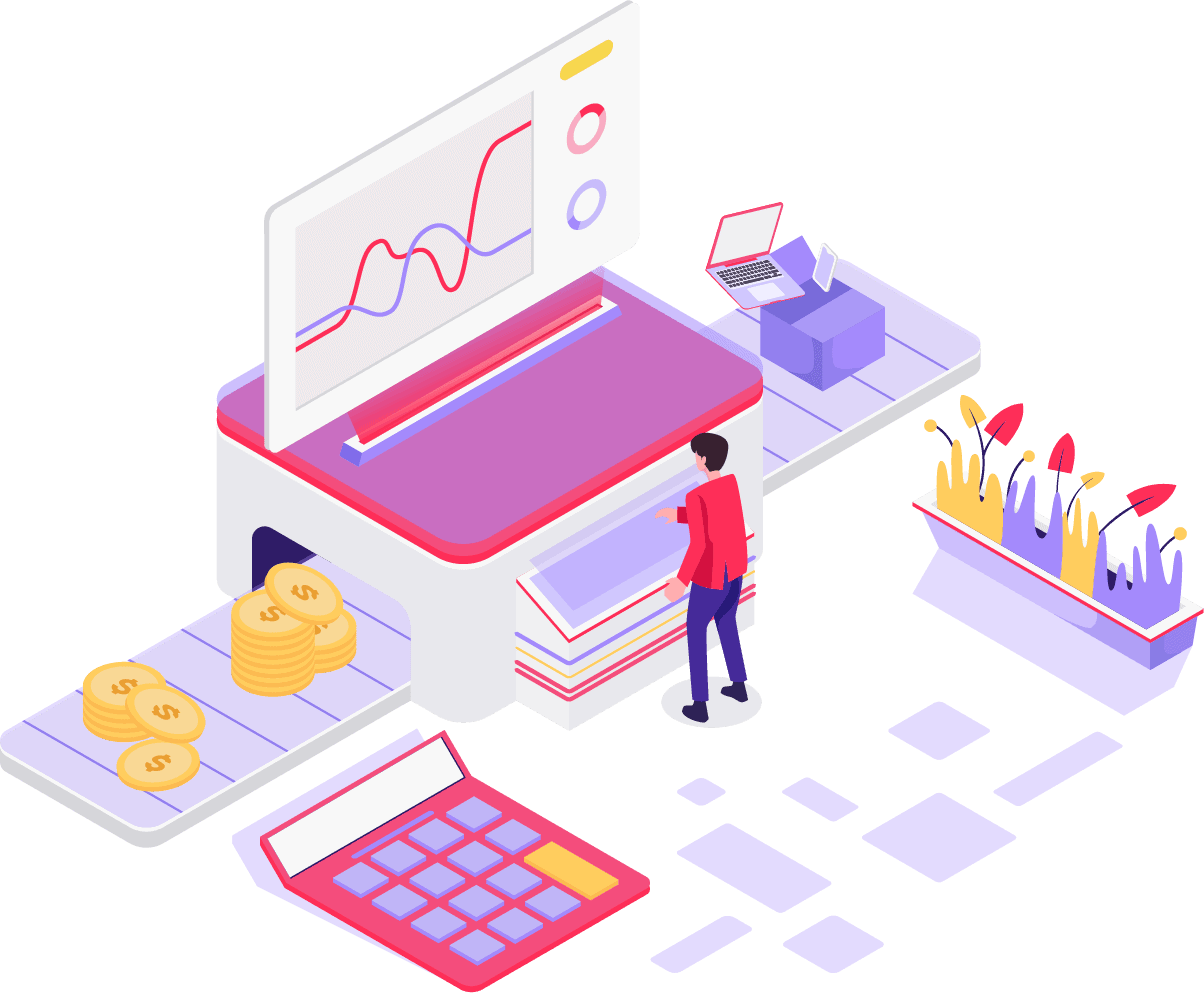
4 CRO Techniques to Try
Conversion rate optimization can generate great results if done right. The first thing you need to do is conduct split testing. Here are some of the other techniques you can try to optimize your conversion rate.
Improve your call to action (CTA) in your blogs
Calls to action are one of the essential elements of your blog. They’re what help guide readers to conversion. If you’ve ever visited a website, clicked on a link, and been sent back to where you started without achieving anything or made it through only to realize there was no CTA at the end.
First things first: know who your audience is so you can tailor your message accordingly. Find out if they’re likely to be looking for an answer, trying to solve a problem, or seeking guidance in their decision-making process. Then think about how much time they have before moving onto something else–are they short like me? Or are they longer attention spans like my spouse? Once you figure that part out, it’s easier to create a call-to-action that can drive readers to convert.

Try changing the headlines of your landing pages
Your headlines are the most prominent and visible component of your landing pages other than the used images. The image is there to catch people’s attention, but it’ll only get them so far on its own.
So how do you make sure that they read your content? One way would be changing up what headlines say to draw more interest from a reader who might not otherwise have clicked onto it in their social media feed.
- Try adding numbers or statistics into titles
- Highlight benefits instead of features
- Start with strong statements
Test How Many Form Fields Your Website Form Should Have to Drive High Conversions
The number of form fields on your website can be tested to see if it impacts conversion rate. Take a look at the example below:
There are two variations in this test, and one variation has three more form fields than the other.
Let’s say you have an e-commerce site where purchases require input for billing information, shipping details, payment types, etc. Suppose you were to try adding another field or two on either page with the hope that those extra few seconds might make all the difference in encouraging visitors to complete their purchase rather than leave without buying anything (or worse yet, opting out of filling out any of your forms). How would you know what is most likely to work?
You need to test out the variations to see which one is more likely to influence your conversion rate.
Make your checkout process simple
Most websites have a checkout process that requires the user to input their billing information before they can purchase. This is understandable, as it keeps credit card numbers and other personal data safe from hackers.
However, this extra step in the shopping cart process makes for an inconvenience when customers choose not to buy anything at all. Implementing a one-click or ‘quick check out’ option simplifies things greatly by allowing users who aren’t ready to make a purchase now to bypass entering their info and continue browsing without worrying about forgetting something later on down the line.
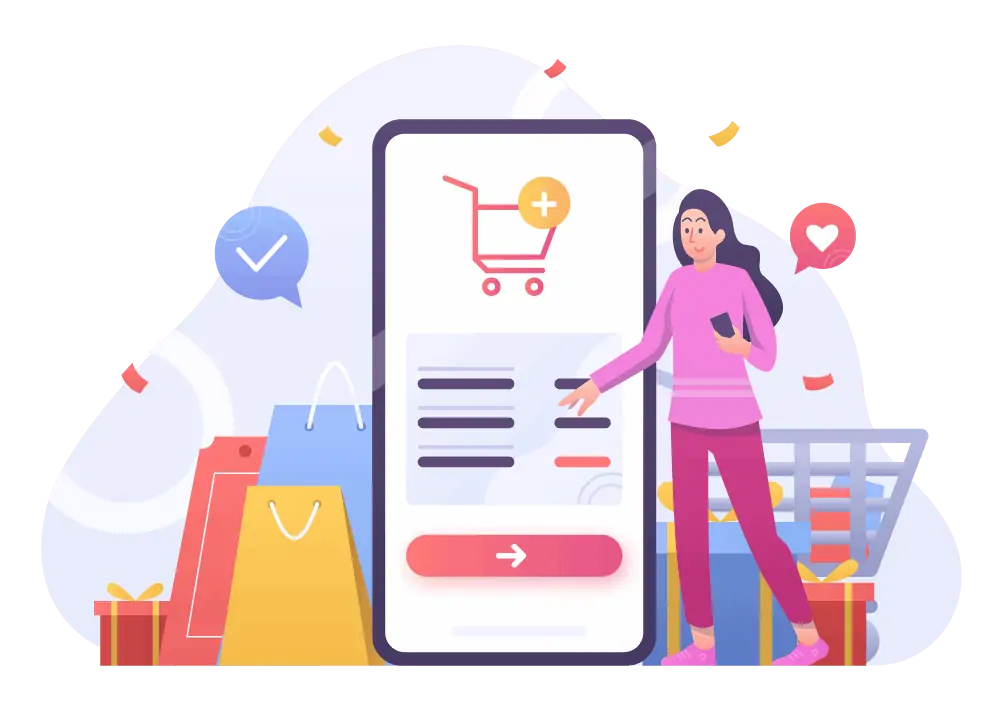
This doesn’t mean you should eliminate your security measures; instead, consider implementing additional safety features like SSL certificates (which keep sensitive data encrypted).
With Woocommerce integration in Messenger Bot, the checkout process for your customers are now more straightforward. You can also recover users who have abandoned their carts by setting abandoned cart reminders to boost sales. You can also create your eCommerce store in Messenger and keep 100% of your revenue.
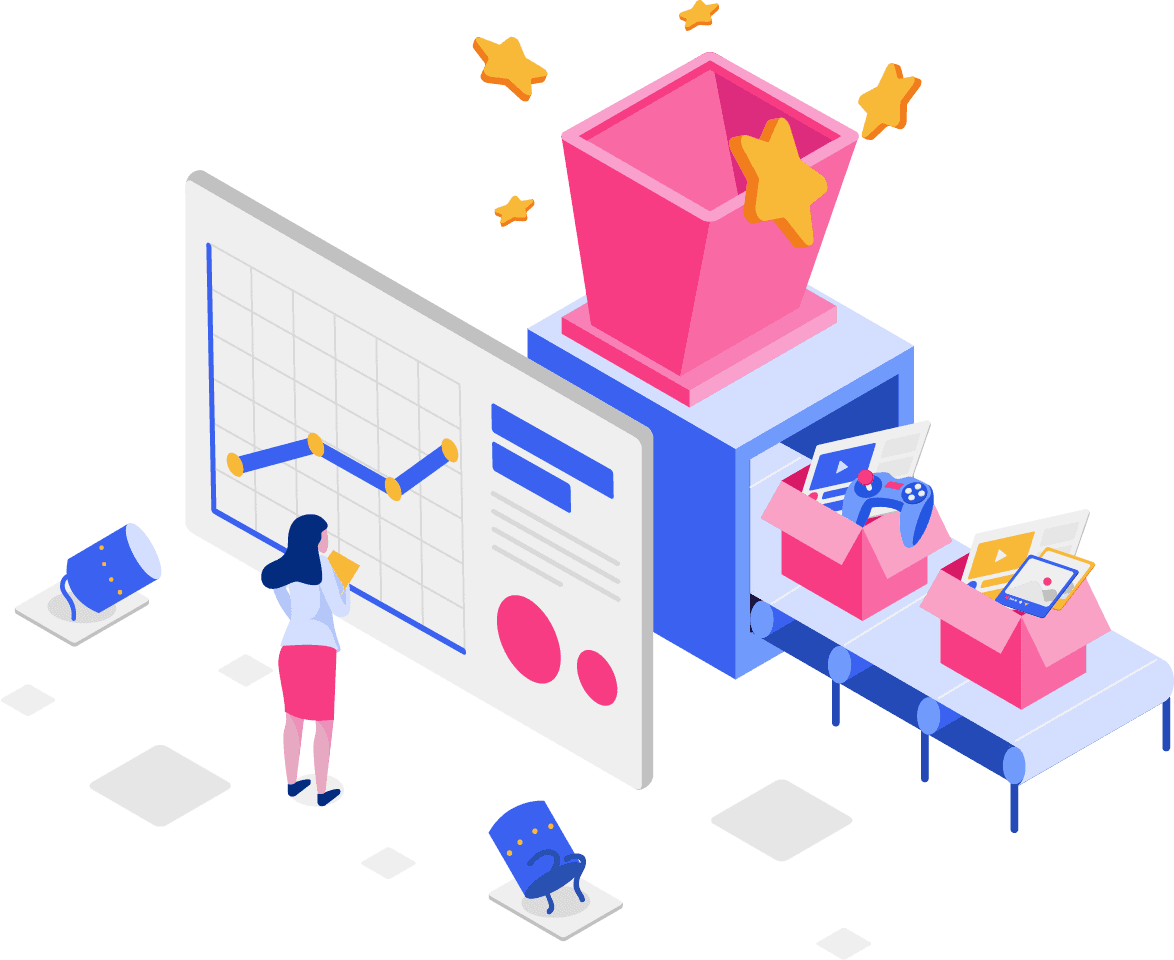
Improve your Conversion Rate with Messenger Bot
Conversion optimization is vital to improve your conversion rates. You are using Messenger Bot to answer queries in real-time increases customer satisfaction. Thus, the quick response time can help them eliminate their doubts about your brand, which leads to an increase in your conversions.
Start your CRO strategy with Messenger Bot today!
